8. Afghan Hound
The Afghan Hound is known for its stunning, flowing coat, which is one of the breed’s most distinctive features. This breed’s coat is long, fine, and silky, requiring a significant amount of grooming to keep it in top condition. Afghan Hounds need to be brushed several times a week to prevent tangles and matting, and they should be bathed regularly to keep their coat clean and healthy. Because of their coat’s delicate nature, special shampoos and conditioners are often recommended. Grooming an Afghan Hound can be a time-consuming process, and many owners opt to take their dogs to professional groomers for regular maintenance. The effort required to maintain the Afghan Hound’s coat is well worth it for those who appreciate the breed’s elegant and regal appearance.

7. Bichon Frise
The Bichon Frise is a small, cheerful breed known for its fluffy white coat, which resembles a cotton ball. While the Bichon Frise’s coat is undeniably adorable, it requires extensive grooming to keep it looking its best. The breed’s curly, dense coat needs to be brushed daily to prevent matting, and regular baths are necessary to keep the coat clean and white. Bichon Frises also require regular trimming to maintain their characteristic round appearance. Their coat doesn’t shed much, which is a bonus for allergy sufferers, but it also means that dead hair needs to be manually removed through brushing. Many Bichon owners choose to take their dogs to professional groomers for regular haircuts and maintenance. Despite the high grooming demands, the Bichon Frise’s friendly and affectionate nature makes them a beloved companion for those willing to put in the effort.
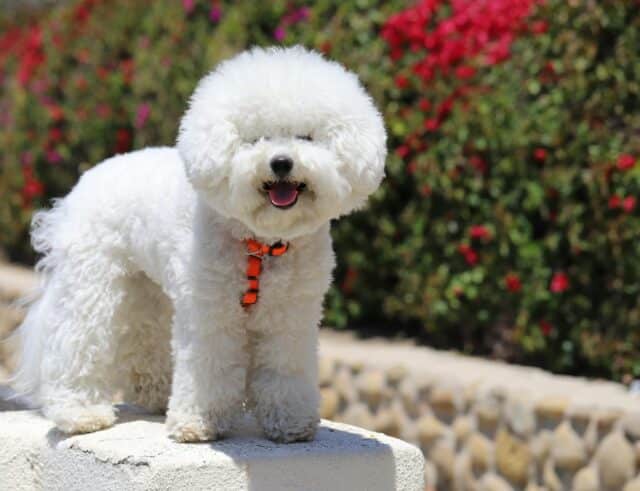
6. Old English Sheepdog
The Old English Sheepdog is a large, shaggy breed known for its dense, double coat that covers the entire body, including the eyes. This breed’s coat is thick and profuse, requiring extensive grooming to prevent matting and tangling. Old English Sheepdogs need to be brushed several times a week, if not daily, to keep their coat in good condition. They also need regular baths, especially if they spend a lot of time outdoors, as their coat can easily pick up dirt and debris. In addition to brushing and bathing, Old English Sheepdogs may require regular trimming to keep their coat manageable. Grooming this breed can be a significant time commitment, but for those who love the breed’s charming appearance and playful personality, it’s a labor of love.
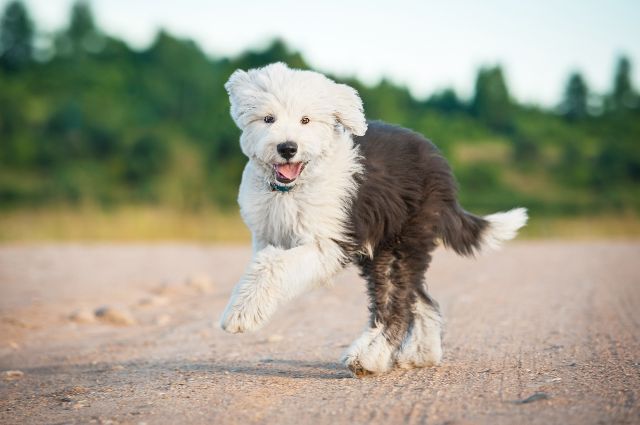
5. Poodle (Standard, Miniature, and Toy)
Poodles, regardless of size—Standard, Miniature, or Toy—are known for their curly, dense coats that require extensive grooming to maintain. The Poodle’s coat is unique in that it is made up of dense, curly hair that can easily become matted if not properly cared for. Poodles need to be brushed regularly, often daily, to prevent tangles and matting. Regular haircuts are also necessary to keep the coat manageable, and many Poodle owners opt for the traditional “Poodle cut,” which requires a skilled groomer. In addition to brushing and trimming, Poodles need regular baths to keep their coat clean and free from dirt and debris. The Poodle’s coat doesn’t shed much, which is great for those with allergies, but it does require consistent care. Despite the high grooming demands, Poodles are highly intelligent, trainable, and affectionate dogs, making them a popular choice for those who are willing to invest their time in grooming.
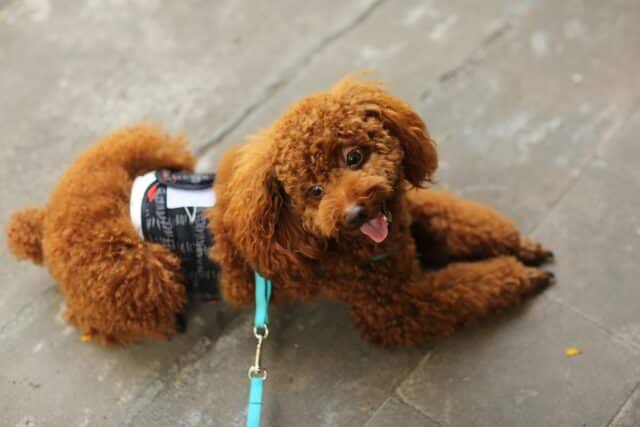
4. Shih Tzu
The Shih Tzu is a small, affectionate breed known for its long, flowing coat, which requires a considerable amount of grooming to keep it looking its best. The Shih Tzu’s coat is dense and can grow quite long, often reaching the ground if not trimmed. To prevent matting and tangling, Shih Tzus needs to be brushed daily, and regular baths are necessary to keep their coat clean and healthy. Many Shih Tzu owners choose to keep their dogs in a shorter “puppy cut” to reduce the amount of grooming required, but even with a shorter coat, regular maintenance is still necessary. In addition to brushing and bathing, Shih Tzus need regular trimming around the face to keep their hair out of their eyes. Despite the grooming demands, Shih Tzus are beloved for their sweet, friendly nature and make excellent companions for those who are dedicated to their care.

3. Lhasa Apso
The Lhasa Apso is another small breed with a long, flowing coat that requires extensive grooming. Originally bred as a watchdog in Tibetan monasteries, the Lhasa Apso’s coat is thick and dense, providing protection from the harsh climate. To keep the coat in good condition, Lhasa Apsos needs to be brushed daily to prevent tangling and matting. Regular baths are also necessary to keep the coat clean and free from debris. Many Lhasa Apso owners opt for regular professional grooming to keep their dog’s coat manageable, and some choose to keep their Lhasa Apso in a shorter cut to reduce grooming time. In addition to coat care, Lhasa Apsos also need regular attention to their ears and eyes to prevent infections. The grooming demands of the Lhasa Apso are significant, but their loyal and protective nature makes them a cherished companion for those who are up to the task.
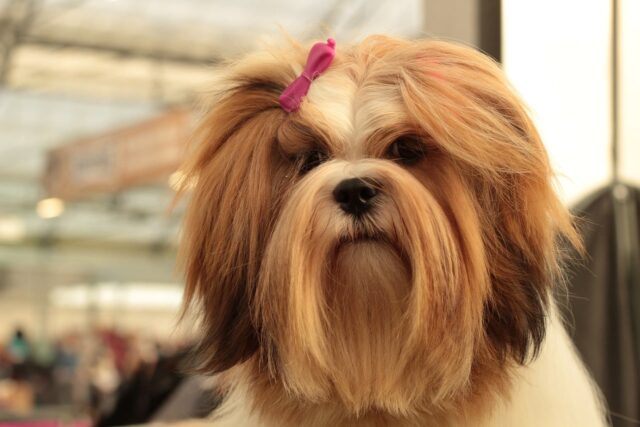
2. Komondor
The Komondor is a large, imposing breed known for its distinctive corded coat, which resembles long dreadlocks. This unique coat requires a significant amount of grooming to maintain its appearance and health. The Komondor’s coat naturally forms cords as the dog matures, and these cords need to be separated regularly to prevent matting and to ensure that the dog’s skin can breathe. Grooming a Komondor can be a time-consuming process, as the cords need to be carefully maintained to prevent dirt and debris from becoming trapped. Regular baths are also necessary, but drying a Komondor’s coat can take several hours due to the thickness of the cords. Despite the grooming demands, the Komondor’s protective nature and striking appearance make it a popular choice for those who appreciate its unique look and are willing to invest time in its care.
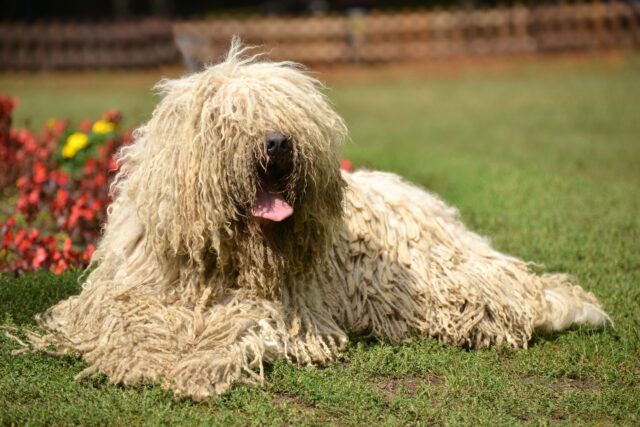
1. Puli
The Puli is a medium-sized Hungarian herding breed known for its distinctive corded coat, similar to the Komondor but on a smaller scale. The Puli’s coat naturally forms tight cords that need to be carefully maintained to prevent matting and ensure the dog’s comfort. Grooming a Puli is a labor-intensive process that requires regular attention to keep the cords clean, free from debris, and properly separated. Bathing a Puli can be particularly challenging, as the cords take a long time to dry and require careful handling to prevent mildew or mold from developing. Despite the grooming challenges, the Puli is known for its agility, intelligence, and lively personality, making it a beloved companion for those who are dedicated to its care. The Puli’s unique appearance and high grooming demands make it the top breed on this list of dogs that require extensive grooming.
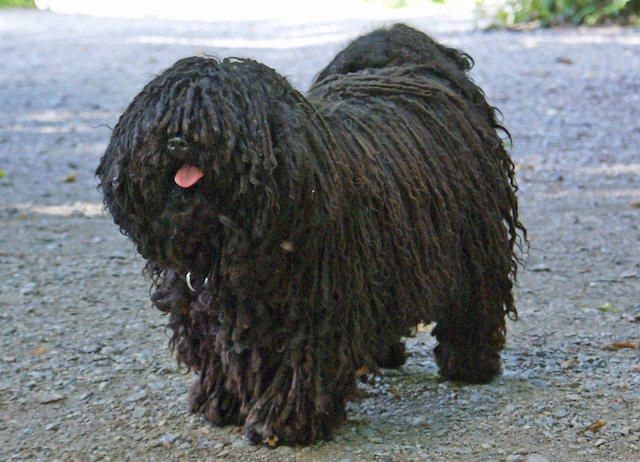
These dog breeds each have unique coat types that require significant grooming to keep them healthy and looking their best. While the grooming demands may be high, the rewards of owning one of these beautiful and loyal breeds are well worth the effort for those who are up to the task. Regular grooming is essential not only for maintaining the dog’s appearance but also for preventing health issues and ensuring their overall well-being. If you’re considering one of these breeds, be prepared to invest time, effort, and possibly professional grooming services to keep your dog in top condition. With the right care, these breeds can bring immense joy and companionship into your life.
 Toledo, United States.
Toledo, United States.